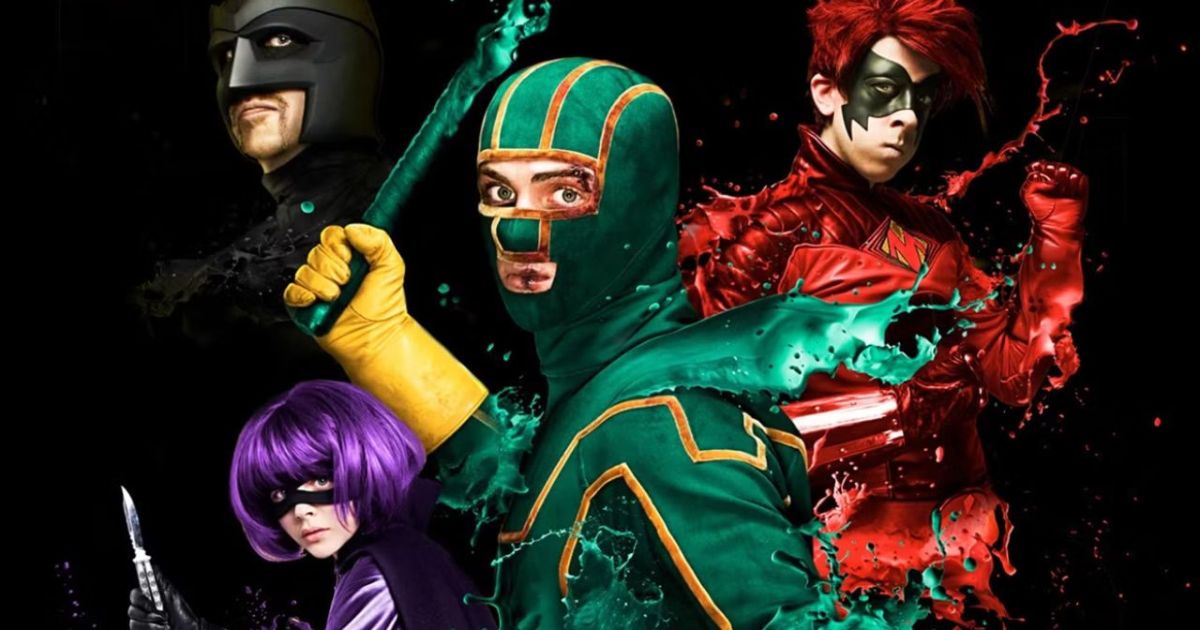The superhero genre saw a drastic rise in prominence throughout the 2010s. Spearheaded by Sam Raimi’s Spider-Man trilogy, Christopher Nolan’s Batman saga, and the X-Men movies from 20th Century Studios, formerly 20th Century Fox, the genre became a true force to be reckoned with in the cinematic landscape. Of course, the arrival of the Marvel Cinematic Universe in 2008 exploded things going into the 2010s, the undeniable peak of superhero cinema in the mainstream. Sandwiched between Marvel’s early efforts and their eventual dominance is Matthew Vaughn’s 2010 subversive superhero exercise, Kick-Ass.
Adapted from the eponymous comic book by Mark Millar and John Romita Jr., the film is a landmark in superhero cinema. It wasn’t a commercial success, nor did it turn the titular superhero into a household name capable of going toe-to-toe with Marvel and DC’s finest. However, Kick-Ass was a full 180 for the superhero genre, pushing its boundaries to the extreme and inviting more chaotic and daring perspectives into the space. At a time when the superhero genre is fighting for its life, Kick-Ass seems like a true breath of fresh air, aging like fine wine despite, or perhaps because of, the sheer volume of superhero properties released every year. On its fifteenth anniversary, it’s time to look back at this hyper-violent and explosive gem of the superhero genre, which remains as fresh today as it was in 2010.
Can an average Joe truly kick ass?
Kick-Ass follows teenager Dave Lizewski (Aaron Taylor-Johnson), who gets carried away by his appreciation for comic books and decides to become a crime-fighter under the name Kick-Ass. During his first outing, he gets stabbed and run over by a car, resulting in several og his bones being replaced with metal, giving him enhanced durability and resistance to pain. Soon, Kick-Ass finds himself in the middle of a very real war between violent and psychopathic mafia boss Frank D’Amico (Mark Strong) and a pair of costumed vigilantes, Big Daddy (Nicolas Cage) and Hit-Girl (Chloë Grace Moretz), who have the genuine fighting ability he sorely lacks.
The premise for Kick-Ass was truly out-of-the-box in 2010, a time when superhero movies were characterized for their sillier approach and embrace of superpower tropes. Kick-Ass didn’t feature abilities of any kind, but it didn’t adopt a hyper-realistic, crime-adjacent approach to the genre like Christopher Nolan’s Batman movies. Instead, it existed somewhere in the middle, enjoying the humor and inherently silly tone of traditional superhero movies while grounding the story in the absurdity of an average teenager attempting to become a crime-fighting vigilante.
Kick-Ass was in on the joke while actively trying to redefine the punchline. It was deliriously violent and vulgar — an infamous line in which Hit-Girl, played by a then thirteen-year-old Moretz, said the word “c*nt caused some anger from pearl-clutching audiences in 2010. Indeed, the overall violence, and the fact that it was Hit-Girl behind most of it, was a subject of discussion, with prominent critics, including Roger Ebert, condemning the film for glorifying violence among children.
Superheroes unleashed

A badass legacy

Read the full article here














